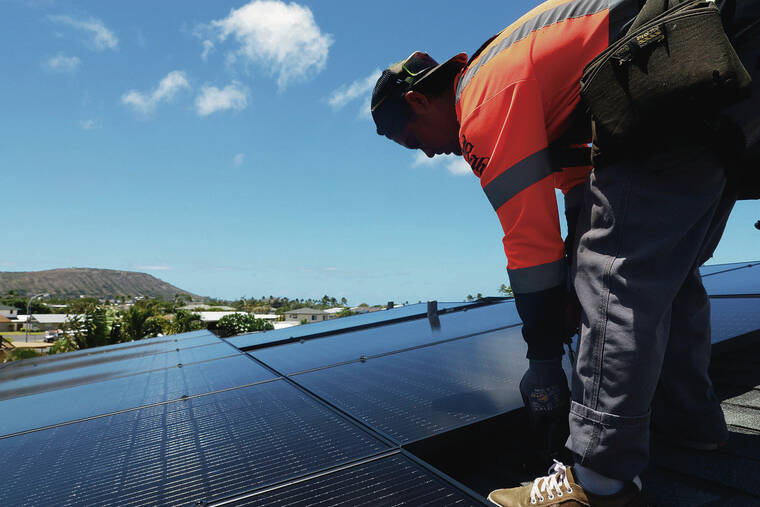By None
Copyright staradvertiser

For billions of years, the sun has energized life on Earth. Through photosynthesis, it feeds plants and fuels ecosystems. It drives weather patterns, warms our skin, and grows our food. More recently, human innovation has harnessed sunlight to generate electricity and power our communities.
And this year, Sunday, Sept. 21, has been designated “Sun Day,” a day of action that recognizes the star that makes life on Earth possible and celebrates the clean energy future it offers. Wherever the sun shines, there’s potential to generate electricity. Notably, solar energy is now the most cost-effective form of electricity generation globally.
What about when the sun doesn’t shine?
Solar power is often paired with batteries to ensure reliable power by storing excess solar energy and dispensing it at night. Thus, batteries can make solar energy firm by addressing the variability and intermittency in electricity production.
As expected, innovations and economies of scale in battery technology and cell manufacturing are enabling cost reductions in energy storage solutions. This is making solar power increasingly affordable and dependable. As a result, solar is winning!
A new solar farm with battery storage often costs less than building and operating a new fossil fuel-powered plant, which requires a constant supply of fuel and extends our energy dependence.
We must shift to homegrown energy sources, such as solar, if we are to achieve energy independence.
We must not be deterred by pressure to maintain our dependence on fossil energy — more than a billion dollars is spent annually on marketing and lobbying to extend this habit. Instead, we can follow the lead of countries already proving what’s possible. China is a good example. It is installing the equivalent of multiple coal plants’ worth of solar every day.
Solar is already proving itself here at home. Kauai Island Utility Cooperative (KIUC), which provides electricity to Kauai, was an early adopter of solar and other renewable energy sources. KIUC routinely achieves 100% renewable energy for extended periods, especially on sunny days. Notably, Kauai has the lowest per-kilowatt-hour rate in Hawaii. On Oahu, as of 2024, 43% of Hawaiian Electric’s single-family home customers have rooftop solar installations, and the company’s overall solar generation capacity exceeds 1,400 megawatts.
The shift toward solar energy can be accelerated by modernizing regulations and permitting processes. These continue to present roadblocks in the deployment of solar and storage solutions. They also prevent the deployment of helpful solutions like “balcony solar” — small lanai or yard-mounted solar panel systems.
In Germany, a renter can buy and install a solar panel on their balcony and plug it into an electric outlet. This reduces the amount of power pulled from the grid. Appliances plugged into other outlets use the electricity generated by the balcony-solar panel. One million such systems have been registered in Germany.
In the U.S., utility rules, permitting, and building codes currently block balcony solar. But that’s beginning to change. Earlier this year, Utah became the first state to approve balcony solar. If Utah can do it, so can other states, including Hawaii.
Sun Day is a reminder that we already have the tools, technology and knowledge to create a cleaner, more affordable energy future. To accelerate our journey to our clean energy future, let’s address the barriers that hinder our progress. Let’s modernize regulations, permitting rule, and building codes. Let’s make it possible for more to enjoy the benefits of solar energy.
On Sun Day, Sept. 21, let us honor our star that shines energy upon us, and let us commit to building a future powered by it.
Helen Cox chairs the Kauai Climate Action Coalition and is co-lead of the Kauai Chapter of Citizens Climate Lobby; JoAnn Yukimura, a former Kauai mayor, is a member of the Kauai coalition; Noel Morin is a climate, sustainability and resilience advocate based in Hilo.



